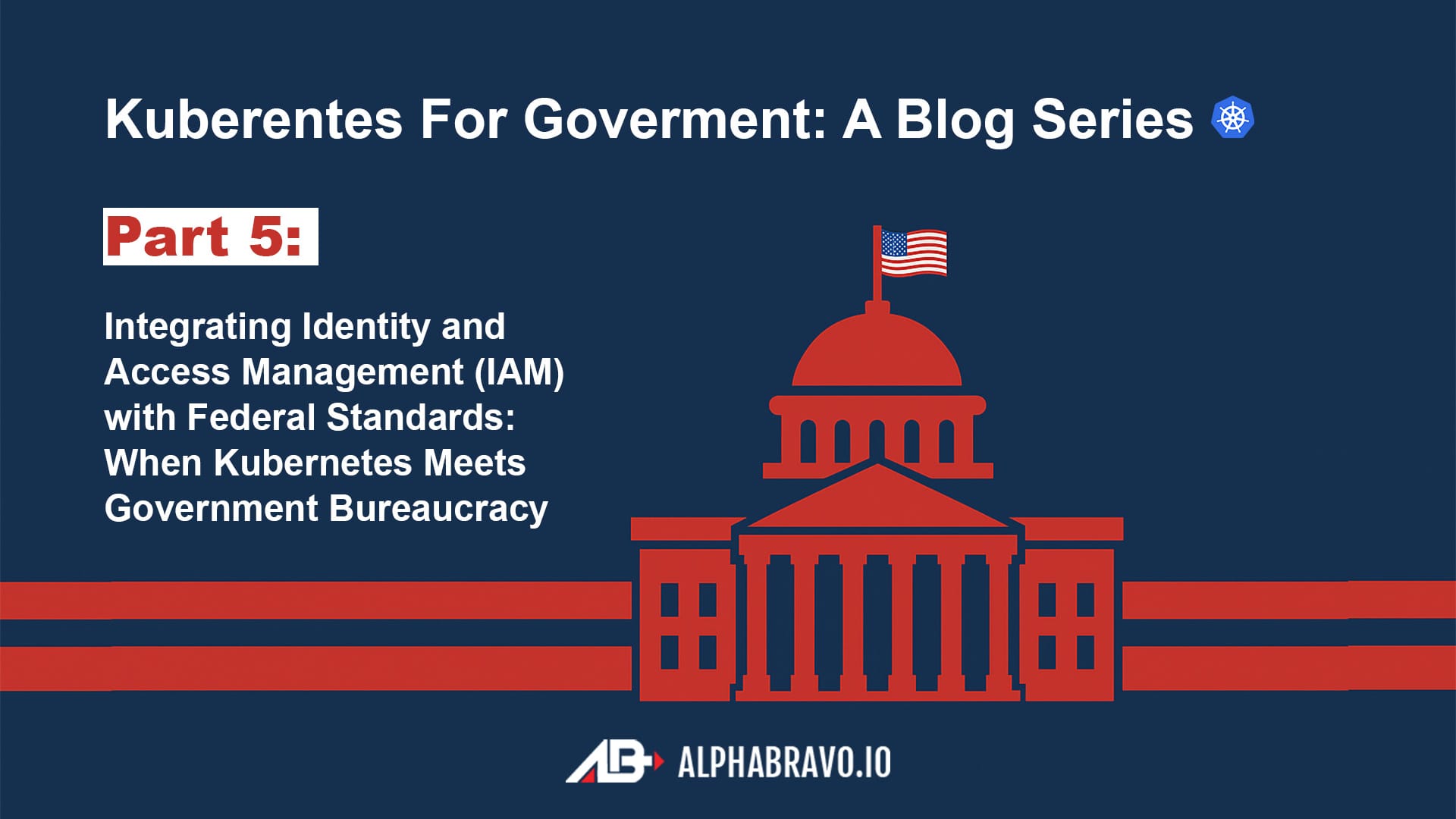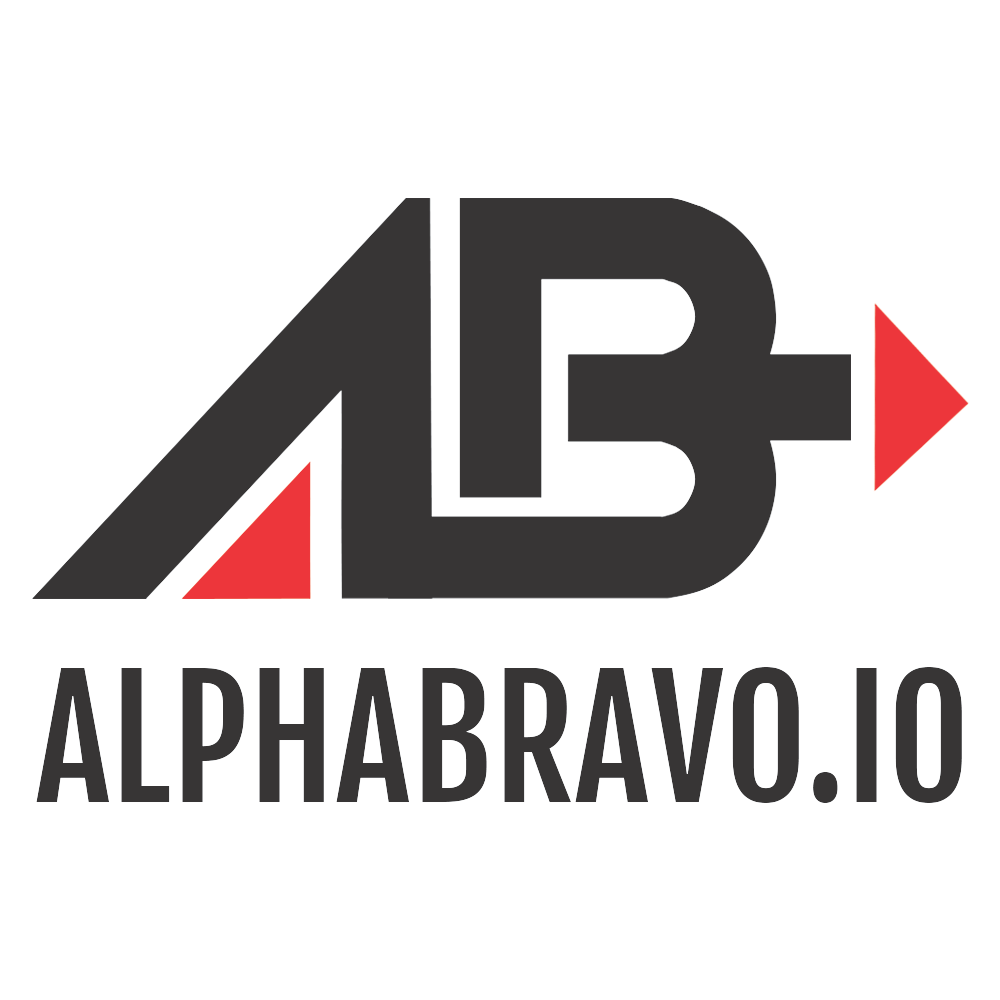Integrating Identity and Access Management (IAM) with Federal Standards: When Kubernetes Meets Government Bureaucracy (Part 5)
Bridging Cloud-Native Identity with Federal Compliance: Kubernetes IAM the Government Way

Ever tried explaining Kubernetes to your government procurement officer? Now imagine explaining how your cluster's authentication system meets NIST 800-53 controls. Welcome to the fascinating intersection of cutting-edge container orchestration and decades-old federal security requirements – a place where DevSecOps meets paperwork, and where "moving fast and breaking things" collides with "document everything and wait for approval."
In our previous explorations (Part 1, Part 2, and Part 3), we've navigated the complex waters of Kubernetes in government environments. We've also covered baseline security controls for DoD compliance. Now it's time to tackle perhaps the most Byzantine challenge yet: integrating your Kubernetes authentication and authorization systems with federal identity standards.
The Federal IAM Landscape: A Tapestry of Acronyms
The federal government loves its acronyms almost as much as Kubernetes loves its controllers. FedRAMP, FISMA, NIST, FIPS – the alphabet soup of compliance frameworks creates a complex tapestry of requirements that your Kubernetes clusters must satisfy.
At its core, FedRAMP (Federal Risk and Authorization Management Program) establishes a standardized approach to security assessment, authorization, and continuous monitoring for cloud services[16]. As of April 2021, Amazon EKS achieved FedRAMP-High compliance in AWS GovCloud regions, opening doors for agencies to run compliant Kubernetes workloads[14].
But what does this mean for your authentication systems? Federal IAM requirements generally emphasize several key principles:
- Strong identity verification
- Multi-factor authentication
- Centralized identity management
- Comprehensive audit trails
- Strict access controls
Translating these requirements into Kubernetes authentication mechanisms requires careful planning and implementation. Let's dive into how you can make these worlds converge without causing a security incident or a compliance officer's nervous breakdown.
Authentication Options for Federal Kubernetes: Pick Your Authentication Poison
CAC Integration: When Your Identity Fits in Your Pocket
The Common Access Card (CAC) – that plastic rectangle dangling from lanyards throughout federal buildings – represents a cornerstone of federal authentication. Integrating CAC authentication with Kubernetes involves leveraging the x509 certificates embedded in these cards.
Kubernetes natively supports client certificate authentication, making CAC integration theoretically straightforward. However, the devil hides in the implementation details. You'll need to:
- Configure your API server to trust the DoD certificate authority hierarchy
- Implement certificate revocation checking
- Map certificate attributes to Kubernetes identities
- Establish certificate lifecycle management
Remember that while certificate-based authentication seems secure on the surface, many security experts now recommend against using certificates as your primary authentication method[15]. As one security expert bluntly put it: "You shouldn't ever use certificates for authentication to Kubernetes clusters. It's simply not as secure as it appears, especially when OpenID Connect is available."
SAML/OIDC: Federal Single Sign-On Gets Containerized
For agencies already invested in identity providers like Active Directory Federation Services or ForgeRock, OIDC and SAML provide more flexible integration paths.
OpenID Connect (OIDC) has become the darling of Kubernetes authentication methods, with native support in the Kubernetes API server. By configuring Kubernetes to trust an external OIDC provider, you can leverage existing federal identity systems while maintaining a clean separation of concerns[7].
SAML, while not natively supported by Kubernetes, can be implemented through an authenticating proxy or integration tools. Products like Teleport offer SAML connectors that can authenticate users against existing SAML providers and then implement Kubernetes impersonation to grant access[9].
Both approaches offer significant advantages for federal environments:
- Centralized identity management
- Support for multi-factor authentication
- Integration with existing identity governance
- Simplified credential lifecycle management
AWS IAM Authenticator: When Your Cluster Lives in GovCloud
For federal agencies operating in AWS GovCloud, the AWS IAM Authenticator for Kubernetes offers a compelling authentication option[12]. This tool allows you to authenticate to your Kubernetes clusters using AWS IAM roles and users, leveraging CloudTrail for audit logging and AWS's robust IAM policies for access control.
This approach provides several advantages:
- Reduced credential management overhead
- Integration with existing AWS authentication
- Out-of-band audit trails through CloudTrail
- MFA enforcement through AWS IAM
As one government contractor put it: "At reecetech, we want to consume AWS services from the pods running in our Kubernetes clusters... We used OpenID connect to federate the identity pods have in our Kubernetes clusters (RBAC) to AWS IAM"[6]. This allows for seamless integration between Kubernetes workloads and AWS services without managing separate credential sets.
FedRAMP Compliance: Making Your Kubernetes Cluster Pass Federal Inspection
Achieving FedRAMP compliance for your Kubernetes authentication systems requires addressing multiple control families from NIST SP-800-53r5, particularly around access control (AC), identification and authentication (IA), and audit and accountability (AU).
Monitoring for Compliance
FedRAMP mandates continuous monitoring of security controls. For Kubernetes authentication, this means implementing comprehensive logging and monitoring of authentication events[10]. Your monitoring solution should capture:
- Authentication attempts (both successful and failed)
- Authorization decisions
- Privilege escalation events
- Administrative access to authentication mechanisms
As noted in the RAD Security blog: "The most recent revision of NIST SP-800-53 (revision 5) adds a new section of software supply chain security... Ensuring your Kubernetes cluster is FedRAMP compliant involves verifying the provenance of all cluster components"[10]. This extends to the authentication components as well.
FIPS Validation: When Your Crypto Needs Government Approval
Federal Information Processing Standards (FIPS) compliance introduces another layer of requirements. FIPS 140-2/140-3 validated cryptographic modules must be used for all encryption, including TLS connections to the Kubernetes API server.
As Buoyant's documentation notes, "Buoyant Enterprise for Linkerd is dramatically reducing our time to FIPS certification, allowing us to ensure security and compliance of our customers' sensitive data"[4]. Service meshes like Linkerd can provide FIPS-validated mTLS between services, addressing a key compliance requirement.
Implementing Least-Privilege Access: The Art of Saying "No" Nicely
Federal security standards emphasize the principle of least privilege – users and processes should have only the minimum access necessary to perform their functions. In Kubernetes, this translates to carefully designed RBAC policies.
RBAC Strategies for Federal Environments
RBAC (Role-Based Access Control) forms the backbone of Kubernetes authorization. For federal environments, RBAC policies should be meticulously crafted to provide the minimum necessary permissions.
As stated in RAD Security's blog: "The Kubernetes community has largely coalesced around one [access control system] — Role Based Access Control (RBAC) — as the gold standard for authorization within a Kubernetes cluster"[10].
Demonstrating FedRAMP compliance requires ensuring that you:
- Have implemented RBAC
- Have defined and applied roles appropriately to achieve least privilege
- Are actively monitoring role usage, particularly privileged ones
- Periodically audit role usage and adjust permissions as necessary[10]
The challenge lies in balancing security with usability. Too restrictive, and your development teams will create shadow IT solutions; too permissive, and you risk security breaches and compliance violations. It's like setting up the perfect thermostat temperature in an office – someone will always complain it's too hot or too cold.
Real-world Implementation Strategies: Putting Theory into Practice
Identity Federation Patterns
Federation allows you to maintain identity information in a central location while using it across multiple systems. For Kubernetes in federal environments, this typically means integrating with an existing identity provider.
Amazon EKS, for example, allows IAM users and roles to access Kubernetes APIs. As stated in the AWS documentation: "This type requires authentication to IAM. Users can sign in to AWS as an IAM user or with a federated identity principal (role or user) by using credentials provided through an identity source"[1].
Similarly, Google Cloud offers Workload Identity Federation for Kubernetes, allowing workloads running on services like AKS or EKS to access Google Cloud APIs securely[8].
Integration with Federal IDPs
Federal agencies typically have established identity providers, often based on Active Directory or specialized solutions meeting federal requirements. Integrating these with Kubernetes requires careful planning:
- Identify the authentication protocols supported by your IDP (SAML, OIDC, LDAP)
- Select an appropriate integration method (direct API server integration, authentication proxy, federation service)
- Map identities and groups from your IDP to Kubernetes RBAC roles
- Implement additional security controls required by federal standards
The key is to leverage existing identity infrastructure while meeting Kubernetes-specific requirements. As Okta's Jonathan Whitaker demonstrated, tools like OpenFGA can provide "a way to federate IAM policies and ensure fine-grained access control within and across organizations"[18].
The Eternal Dance of Certificate Management
If you do use certificate-based authentication, managing certificate lifecycles becomes critical. Federal environments often require shorter certificate validity periods than commercial ones, creating operational challenges.
Tools like cert-manager can automate certificate issuance and renewal, particularly when integrated with an internal ACME CA[5]. This reduces the operational burden while maintaining compliance with federal certificate management requirements.
Beyond Authentication: The Security Onion Has Many Layers
Remember that authentication is just one layer of your Kubernetes security strategy. As we covered in our DoD compliance post, a comprehensive approach must include:
- Network policies and microsegmentation
- Pod security standards and admission control
- Vulnerability management and container scanning
- Runtime protection and threat detection
Imagine your Kubernetes cluster as a federal building. Authentication is the security guard checking IDs at the entrance, but you also need cameras throughout the facility, secure doors between sections, and regular security sweeps to ensure comprehensive protection.
Federal Kubernetes: Where "Move Fast and Break Things" Meets "We've Always Done It This Way"
Integrating Kubernetes with federal IAM requirements creates a fascinating cultural clash. The cloud-native world values automation, flexibility, and rapid iteration. Federal IT security emphasizes documentation, stability, and risk management. Finding the balance requires technical skill and diplomatic finesse.
As one federal Kubernetes administrator told me: "I spend half my time explaining to security teams why containers aren't VMs, and the other half explaining to developers why they can't have cluster-admin access just because it's easier." It's a delicate balance, but one that can be achieved with the right architecture and processes.
The Road Ahead: Security as Foundation, Not Afterthought
As we continue our Kubernetes journey, authentication and authorization form the foundation upon which all other security controls rest. In our next post, "Deploying Kubernetes: Strategies for Scalability and Resilience," we'll explore how to build on this secure foundation to create robust, scalable clusters that meet federal availability requirements.
Remember that in the federal space, security isn't something you bolt on at the end – it's the foundation that makes everything else possible. By integrating Kubernetes authentication with federal IAM standards, you're not just checking compliance boxes; you're building the secure platform that will enable your agency's digital transformation.
Until next time, keep your containers secure and your auditors happy. And remember, in the world of federal Kubernetes, the most dangerous phrase isn't "kubectl delete --all" – it's "I'm sure this is compliant."

